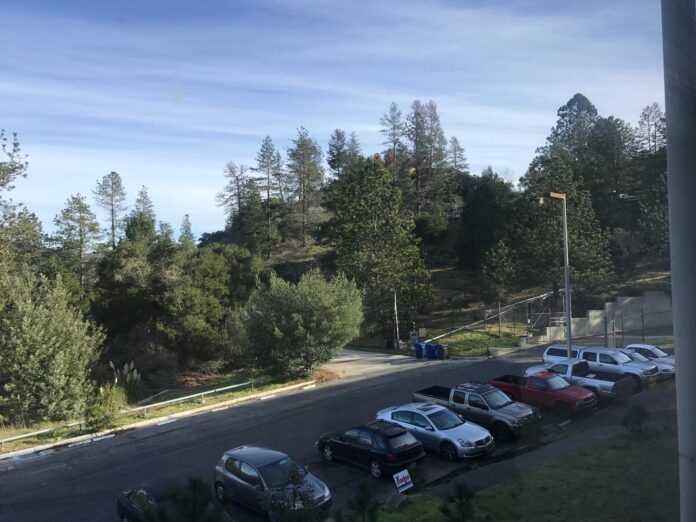The former Aviza property near Scotts Valley’s Skypark appears to be nearly ready to receive a clean bill of health from environmental inspectors, after more than three decades of federal “Super Fund” cleanup activity.
Developers hope this could finally allow redevelopment of the area once considered the birthplace of the electronics industry in Scotts Valley.
The property is located at 440 Kings Village Road, across the street from Skypark. The 43-acre parcel situated in a ravine near Bean Creek is mostly hidden from public view by a chain-link fence and a security-access entry code.
Only six acres of the property were identified by the Environmental Protection Agency as contaminated in 1984. The EPA identified the cause as improper handling of hazardous waste when high-tech giant Watkins-Johnson occupied the property.
“We’re in the final stage of getting this behind us,” said Joseph Appenrodt, an Aptos developer who is spearheading an effort to have the land in the center of the city rezoned from industrial to residential use. “Nobody wants a Super Fund site in their neighborhood.”
Almost 11,000 Scotts Valley residents live within a three-mile radius of the site and receive their drinking water from the Scotts Valley Water District. The district draws its drinking water from the aquifer deep beneath the site – and the rest of the city. The property abuts the 220-home Montevalle community.
Water District General Manager Piret Harmon said that because the district already pumps drinking water from one of the deeper Santa Margarita aquifers, the sources of water beneath the Aviza property and surrounding areas are affected by the contamination.
Arcadis Design and Consultancy, an international business contracted by the EPA to perform the cleanup, issued a report last summer indicating that the majority of the property was free of toxins.
Specifically, TCE (tricholoroethylene) and PCE (perchloroethylene) “were treated to below permit limits prior to discharge,” according to Arcadis geologist Katherine Brandt.
Harmon said the majority of toxic cleanups in Santa Cruz County are overseen by the state’s Regional Water Quality Control Board. The level of toxicity at the Aviza site caused the EPA to step in and cease control.
After pumping and cleaning on the property since 1986, the next step will be for the EPA to abandon and destroy all of the 100 test wells on the site. Not all of those wells are contaminated.
Appenrodt originally estimated that it would take three years for the EPA to complete the cleanup when he purchased the property in early 2013. Now he thinks it will be at least another two years.
“It’s a process,” he said. “It can take months just to set up a meeting.”
Appenrodt has filed an application with the city to demolish approximately 213,000 square feet of an existing heavy industrial building, a portion of which is now occupied by tenants on a short-term lease. He plans to construct a 64-unit residential project if his application to rezone the lot and amend the city’s general plan is approved.
The Super Fund cleanup represents a critical component of the upcoming environmental report for the land. However, the next step, which will occur in the coming weeks, according to Taylor Bateman, acting community development director, is a document sent to state agencies advising that an environmental impact report will be prepared. It is the first step in the environmental impact report process. The final environmental impact report will be prepared by Kimely-Horn and Associates.
Aviza once employed 800 people in the nine buildings comprising more than 200,000 square feet. The company manufactured equipment for the semiconductor industry and declared bankruptcy in 2009.












